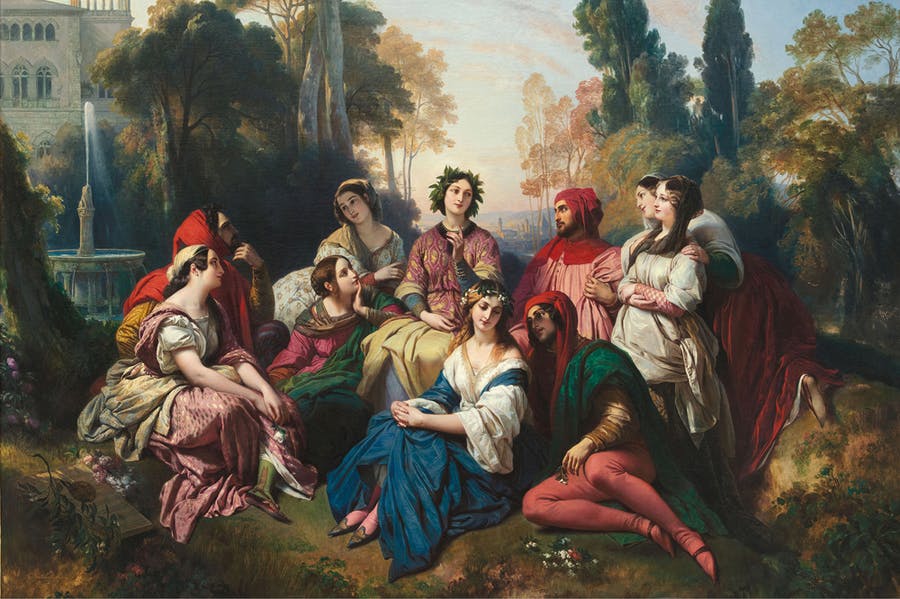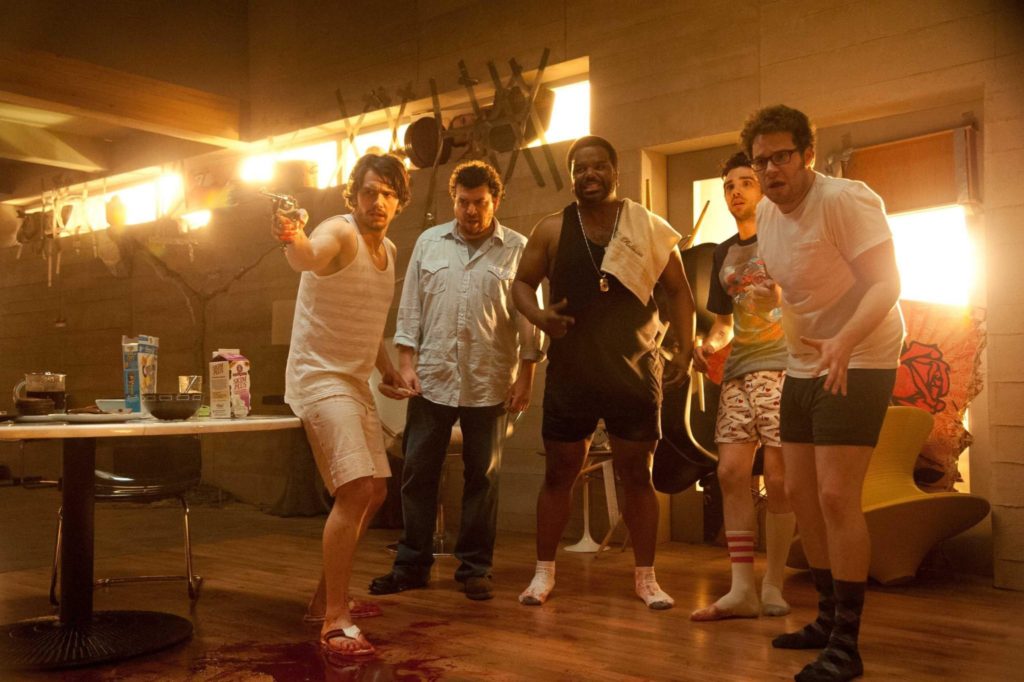The End through the ages. How we see everything we don't know.
More
The End through the ages. How we see everything we don’t know.
Apocalypse, noun apoc·a·lypse | \ ə-ˈpä-kə-ˌlips plural: apocalypses
- one of the Jewish and Christian writings of 200 b.c. to a.d. 150 marked by pseudonymity, symbolic imagery, and the expectation of an imminent cosmic cataclysm in which God destroys the ruling powers of evil and raises the righteous to life in a messianic kingdom
- something viewed as a prophetic revelation
- a great disaster
—Merriam-Webster

Naturally, talk of apocalypse is more lively these days than at any time in recent memory. Ends are on everyone’s mind. There are, of course, people who will tell you that such ideas are best left out of enlightened liberal conversation: climate change, racial injustice, political mayhem, unending wars, being human problems with human causes, not something stirred up by a glowering retribution-minded desert god. Yet the conversations keep coming up, and the idea of god as a controlling presence, as an apocalyptic being, literal or metaphoric, is endlessly enticing even in 2020. The twentieth century theologian/ethicist Reinhold Niebuhr, who was always on the lookout for links between verifiable and eternal worlds, put the modern existential implications of the apocalyptic metaphor front and center: The apocalypse, he wrote, “is a mythical expression of the impossible possibility under which all human life stands.” And in some ways, the implications of “mythical expression” in Niebuhr’s framing might be the same for us in the twenty-first century as it was for the early Judaeans who first conceived of apocalyptic imagery: we stare into the cosmos with awe and trembling. Niebuhr’s winking, “impossible possibility,” points to a crossover of hopelessness and hope, the daily duality of the human condition. Life now, as ever, hangs in the balance.
Historically speaking, there have been plenty of apocalypses to go around. For three millennia, give or take, the apocalypse idea drifted in and out of favor, a readily mutable and spiritually resilient shorthand for temporal anxiety, an enduring myth by which existence might somehow be understood as transcending bodily constraints. The franchise, as Niebuhr hints, has always traded in all kinds of dualities: hope and despair, possible and impossible, end and beginning, salvation or damnation, annihilation and rebirth, submission and domination, reality and myth. We sift through these in hopes of finding a mythology apposite to our times. And as apocalypse metaphor de jour, the COVID-19 (coronavirus) pandemic is unsettling to us not just because of the havoc it wrecks in our streets, homes, workplaces, performance spaces, schools, stores and old folks homes, but because of its disruption of the habits and social customs that have often offered fellow feeling in other would-be apocalypses. Metaphorically, coronavirus, like the 1918 flu before it, ramifies into a diabolical test of social solidarity. In midst of other catastrophes that have tested our forbearance—in wars, pestilence, genocides, to name a few—physical touch, the glances of strangers on the street, offer countervailing human connection. But coronavirus exaggerates havoc, robbing those who are not felled by it of handshakes, kissing, hugs, the bodily frisson and common cause of everyday life, turning friends and lovers into risk factors, and strangers into vectors of the apocalypse. A few months ago a dear friend’s father, whom she used to visit weekly in a nursing home dementia unit, was diagnosed one day and died the next, and the sight of my friend, virtually alone in a blustery Massachusetts cemetery, her fingertips touching the closed box in the back of the hearse that held her father, was one of the most wrenching sights I’ve seen in my lifetime. Two attendees besides the funeral director at the burial. Our aloneness laid bare, bare—
It was a scene that begged an artist to find small redemption in its humbling dignity. At other times when our purchase on life has suddenly become precarious—during the Black Death, the 1918 flu, the holocaust, the AIDS crisis, say—artists have sought to offer metaphors, a way of shaping our collective understanding of the virulently incomprehensible. In the late Middle Ages, as Black Death swept across Europe and Asia, apocalyptic iconography adorned pulpits, illustrated manuscripts, mosaics and the like. In the pandemic’s earliest stages, the imagery tended toward the punitive, pestilence as an instrument of god’s clearinghouse. Anonymous sinners were cast into fiery pits, decomposing bodies set upon by jowl-licking dogs. Only toward the later stages, with millions already dead (many of whom may have been assumed to be non-sinners) did the imagery become a little more sympathetic, the sufferers and suffering humanized, and the artists’ less obsessed with sending earthly sufferers off to eternal suffering in the afterlife. On the literary front, one of the most well-known books to come out of this period reconsidered the Black Death as an instrument of suffering but also pointed toward human commiseration as counter to human impotence. In Boccaccio’s Decameron (1353), a group of young people on the run from the plague entertain each other in a country villa, telling tales that are alternately erotic, heroic and comic. Even in the super-saturatedly religious time, steeped in crippling apocalyptic mythology, the young protagonists sought to create a rich secular life outside familiar tropes of salvation or damnation, with hesitant ambivalence about the origins of “the death dealing pestilence, which, through the operations of heavenly bodies or of our own iniquitous dealings, [was] sent down upon mankind for our correction by the just wrath of God.…”
In our own times, global pandemics, widespread environmental catastrophe, mass unemployment, the shared psychic evisceration of 9/11, neverending racial injustice, a crisis of identity in an increasingly dystopian American scene, has introduced a psychic trauma that seems not far from that of Boccaccio’s protagonists. As a rule, we might feel detached from millennia-old religious beliefs, but as we look into the crystal ball of our collective future we see little reason to believe our terrestrial kingdom can be sustained, and grapple with more than metaphors of mass death. In certain circles, casual conversation turns, almost invariably, to end days, destruction of existing mores, a society facing mortal danger from a virus that invisibly taints the air we breathe, and, in this country, the political party of Lincoln and Teddy Roosevelt and Eisenhower being held in thrall to a thuggish simpleton. A redo seems not only just, but gives hope of a future when saner gods might reign.
In the Seth Rogan buddy-cum-end-of-the-world comedy, This is the End (2013), the end in question comes at a party at James Franco’s house as Hollywood partygoers tumble into fiery pits or are sucked up in blue columns that seem to operate like pneumatic tubes used in nineteenth century department stores, leaving Seth, Franco and their buddies behind, self-quarantined in Franco’s modern Xanadu. Modernists with vague religious awareness, for the life of them they can’t quite put together a list of the deadly sins to sort out why they’ve been left behind, and like seventeenth century theologians debate the Holy Trinity and power of god, when Seth suddenly has a stoner epiphany: “I mean it’s like, its like the real apocalypse. It’s like the Book of Revelations. That means there’s a god, right? That there’s a god? I live my life as if there’s a god, but.… Who actually saw that coming—that there’s a god?”
End came out early in Barack Obama’s second term, before the advent of MeToo, but months after the murder of Trayvon Martin, at a time when cynicism and possibility seemed to be struggling for dominion at the edges of America’s ailing frontier. Seen from a much darker 2020, the lesson of End feels quaintly hopeful, decidedly non-Old Testament, non-Trumpian. Care for each other. Don’t be a douche. Maybe there’s a god. Having learned their lesson, the buddies ascend in the blue columns to a dance-party heaven that’s everything a man-child could wish for, certainly not a place, seven years after the movie came out, most of us would consider congruous to our age of racial reckoning and world pandemic, where we’re inclined to regard each other like stunned survivors.

What exactly is an apocalypse anyway? And, by the way, who gets to advance to the next level? As an idea it’s harder to pin down than Webster’s might let on, or we might think of it. The word, Greek in origin (ἀποκάλυψις, apokaluptein), literally means “uncover,” or “revelation,” and the promise of a new beginning. God would flush out an old fallen world and replace it with a new, improved version. Such thinking really started catching on around the time of the Babylonian exile (597 BC – 538 BCE) as captive Judaeans were deported to Babylon. Judaeans had good reason to wonder about god’s promise that their kingdom would last forever. How were they supposed to take god at his word when their kingdom was plundered, their citizens taken away in bonds? An explanation was needed. So if the apocalypse idea came out of what was essentially a contract dispute, and after several millennia of additional contract disputes, one might argue it now accounts for tent revivals, cosmology, dystopian novels, Decameron, reform movements, This is the End, and nowadays what feels like collective anxiety in the declining days of the American moment.
On a secular level—not just god’s—apocalypses have also been political, and known to operate as displays of power, separating deserving from the undeserving. Take America in 2020. Over the course of his White House lease the ostensible leader of the free world has been barely able to maintain a baseline imbecility. By any objective measure he’ll go down as the worst president in history. But—and here is the crux of god’s methods too— the strongman tactics Trump employs with such gloating glee create a state of perpetual terror about our collective hold on the world. This is the End could laugh at it, but here we are— At the instant of pandemic, and collective national self-examination on questions of race and gender equality, the ostensible leader of the free world wades through cleared streets like a third grade bully, incapable of even pantomiming facial expressions beyond scorn and self-congratulation. An apocalypse suits his agenda of wholesale moral and physical destruction. By “making America great again” (that “again” being, perhaps, the most potently loathsome dogwhistle in history of the republic), the ostensible leader of the free world evokes nostalgia for a past that seems to come from an old tv-show lot, with painted backdrops and eccentric old maids walking their cats. The past as the promised land. But it’s a past as the past never ever was, not even for a day. It’s a past created for the specific reason of eradicating the inconvenient present (as all presents are inconvenient).
Metaphorically, apocalypses, in secular or non-secular modes, have often functioned as an inversion of nostalgia. Or is it more accurate to say that nostalgia and apocalypses are corollaries? Maybe. Yes. Nostalgia looks backwards for some Acadian idyll; apocalypses look forward to wholesale destruction and the restoration of the kingdom. In Thomas Cole’s series of five paintings, The Course of Empire (1833-36), a great empire rises and crumbles, victim of moral corruption and environmental depletion. The narrative is simultaneously nostalgic and apocalyptic. It looks forward to the destroyed empire’s return to nature: looking forward in order to look backwards. Now Make America Great Again exploits a similar fabled-past trope, but, despite the Again, without pretense of any type of restoration. The Great Leader replaces old monuments with cold monuments to himself. He builds the world’s ugliest buildings. He orchestrates Nuremberg-style rallies, missing only a willing Leni Riefenstahl to bath him in light. He sports with nihilism, the dismantling of civilization, and could care less about the lessons of the fall of Rome, nor about the long-view compensations of Course of Empire’s return to nature. Even Tump’s nostalgia is a phony, a gyp.
Yet the question still comes to mind, does the old trope still have something to say in times of pandemic, rampant opioid abuse, global protest, collective uncertainty? Even the ancient Christian theologians in their time had gotten a little squishy on apocalyptic thinking: Augustinian eschatology conceded end days were coming, but Augustine himself (354-430) was more or less agnostic about the how or when part. God would take care of the details. Yet, yet, yet— Despite a general trend over the last several millennia in favor of secular humanism and the shucking of old superstitions, the notion of apocalypse still does manage to rattle and excite our post-Original Sin, post-Darwinian, post-Nietzschean, post-Einsteinian imaginations. In times of social distress, we can sense ourselves as kindred to ancient Judaeans, Augustinian Christians and seventeenth-century puritans, seeking agency in a world beyond our knowing. Before the end of the Second World War everyday use of the word apocalypse had been in steep decline, and had almost fallen into disuse altogether. But since 1945 its everyday usage has gone up almost a hundred percent. As a word, as a metaphor, it acknowledges our growing sense that our worst nightmares might not be nightmares. Burning rain forests, police shooting of unarmed African Americans, the coronavirus dead processed in body bags, resource depletion, the holocaust, the advent of the atomic bomb, with its revelatory graphic of skies lit up in flames, aren’t figments. Perhaps, repurposed for 2020, the metaphor is perfect expression for our dread of imminent annihilation, both our own and that of the planet we thought was guaranteed us. Given such outrages, can the kingdom ever be restored?
You might be interested in
In 1859 John Brown attempted to incite a slave revolt in Harpers Ferry, Virginia. The events of those days became
John Murrell, prolific bandit on the old antebellum Natchez Trace, had a talent for masquerade.
The Klan in my backyard.
Compulsory Patriotism: The National Anthem as Sports Ritual






